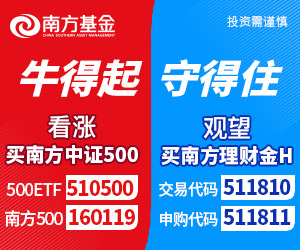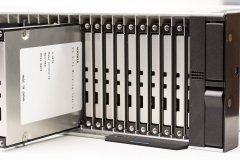CT-P59 (40mg/kg) treated patients reported reduced progression rates to severe COVID-19 by 54% for patients with mild-to-moderate symptoms and 68% for moderate patients aged 50 years and over
CT-P59 (40mg/kg) treated patients reported a significantly shortened time to clinical recovery ranging from 3.4 to 6.4 days quicker compared to placebo
A significant reduction of viral load compared to placebo was reported at Day 7 in patients treated with CT-P59; with CT-P59 receiving a positive safety profile and no drug-related serious adverse events reported
The preclinical data of CT-P59 against SARS-CoV-2, demonstrating a 100-fold reduction in viral load of SARS-CoV-2 and improved recovery time in animal models has been published in Nature Communications journal
INCHEON, South Korea--(BUSINESS WIRE)--Celltrion Group today announced top-line results from its randomised, double-blind, and placebo controlled global Phase II/III clinical trial of CT-P59, an anti-COVID-19 monoclonal antibody treatment candidate. The Part I of the trial enrolled 327 patients with mild-to-moderate symptoms of COVID-19 across three treatment groups (40mg/kg, 80mg/kg and placebo), in which approximately 60% of patients with moderate symptoms suffered from COVID-19 related pneumonia.
This data analysis has demonstrated that at Day 28, CT-P59 treated patients presented with a significantly reduced risk of COVID-19 related hospitalisation and oxygenation without mortality. When compared to placebo, CT-P59 (40mg/kg) treated patients reported reduced progression rates to severe COVID-19 by 54% for mild-to-moderate patients and 68% for moderate patients aged 50 years and over.
CT-P59 treatment groups also reported with significantly shortened time to clinical recovery ranging from 3.4 to 6.4 days quicker compared to placebo. Patients treated with CT-P59 (40mg/kg) recovered 3.4 days earlier than those in the placebo group [5.4 vs. 8.8 days; 95% C.I, 5.35(3.97, 6.78) to 8.77 (6.72, 11.73), log-rank p-value= 0.0097]. Patients with pneumonia treated with CT-P59 (40mg/kg) reported shortened recovery time by 5.1 days compared to placebo [5.7 vs. 10.8 days; 95% C.I, 5.73 (4.13, 7.33) to 10.81 (6.81, N.C.)]. Moderate patients aged 50 years and over treated with CT-P59 (40mg/kg) reported a shortened recovery time by 6.4 days compared to placebo [6.6 vs. 13.0 days; 95% C.I, 6.64 (4.13, 11.94) to 12.97 (6.81, N.C.)].
In addition, CT-P59 treated patients rapidly and significantly reduced viral load through Day 7 compared to placebo. Top-line results from the trial shows CT-P59 to have a positive safety profile, comparable to that of the placebo group, with no serious adverse advents reported. Infusion related reactions were mild and transient, with the CT-P59 treatment group having reported 0.5%, compared to 1.8% reported with placebo.
“The data demonstrate that CT-P59 could contribute to both a reduced time to clinical recovery, as well as a reduced proportion of patients who progress to severe disease.” said Professor Joong-Sik Eom, Infectious Disease Division at Gil Medical Center of Gachon University, “The treatment’s safety profile was comparable to that of placebo and generally well-tolerated. Therefore, it is anticipated that CT-P59 would positively contribute to the management and control of the current COVID-19 pandemic across the world.”
Nature Communications has published the preclinical data of CT-P59 against SARS-CoV-2, demonstrating a 100-fold reduction in the viral load of SARS-CoV-2 and improved recovery time in animal models. Additionally, the data showed encouraging results meeting several criteria from its studies; in-vitro plaque reduction neutralization test (PRNT) against SARS-CoV-2 and SARS-CoV-2 D614G variant to assess the neutralization potency of CT-P59, in-vivo efficacy in animal models to demonstrate in vivo antiviral efficacy of CT-P59, as well as in vitro antibody-dependent enhancement (ADE) assay to investigate the possible adverse effects of a COVID-19 treatment.1
“Our top-line data from the global Phase II/III clinical trial have demonstrated that CT-P59 is effective for the treatment of COVID-19 in mild-to-moderate patients and especially in moderate patients aged 50 years and over. We are encouraged by the robust and consistent nature of the top-line clinical profile of CT-P59 and our clinical studies are on track in more than 10 countries.” said Dr. HoUng Kim, Ph.D., Head of Medical and Marketing Division at Celltrion Healthcare. “We are planning to manufacture doses for around two million patients in 2021 and hope to improve access to this treatment option for those that require.”
- ENDS -
Notes to Editors:
About Celltrion Healthcare
Celltrion Healthcare is committed to delivering innovative and affordable medications to promote patients’ access to advanced therapies. Its products are manufactured at state-of-the-art mammalian cell culture facilities, designed and built to comply with the US FDA cGMP and the EU GMP guidelines. Celltrion Healthcare endeavours to offer high-quality cost-effective solutions through an extensive global network that spans more than 110 different countries. For more information please visit: https://www.celltrionhealthcare.com/en-us.
About CT-P59 (Regdanvimab)
CT-P59 was identified as a potential treatment for COVID-19 through screening of antibody candidates and selecting those that showed the highest potency in neutralising the SARS-CoV-2 virus including the mutated G-variant strain (D614G variant). In pre-clinical data the treatment candidate demonstrated a 100-fold reduction in viral load of SARS-CoV-2, as well as a reduction in lung inflammation. Results from the global Phase I clinical trial of CT-P59 demonstrated promising safety, tolerability, antiviral effect and efficacy profile in patients with mild symptoms of COVID-19.2
FORWARD LOOKING STATEMENT
Certain information set forth in this press release contains statements related to our future business and financial performance and future events or developments involving Celltrion/Celltrion Healthcare that may constitute forward-looking statements, under pertinent securities laws.
These statements may be identified by words such as “prepares”, “hopes to”, “upcoming”, ”plans to”, “aims to”, “to be launched”, “is preparing, “once gained”, “could”, “with the aim of”, “may”, “once identified”, “will”, “working towards”, “is due”, “become available”, “has potential to”, the negative of these words or such other variations thereon or comparable terminology.
In addition, our representatives may make oral forward-looking statements. Such statements are based on the current expectations and certain assumptions of Celltrion/Celltrion Healthcare's management, of which many are beyond its control.
Forward-looking statements are provided to allow potential investors the opportunity to understand mangement’s beliefs and opinions in respect of the future so that they may use such beliefs and opinions as one factor in evaluating an investment. These statements are not guarantees of future performance and undue reliance should not be placed on them.
Such forward-looking statements necessarily involve known and unknown risks and uncertainties, which may cause actual performance and financial results in future periods to differ materially from any projections of future performance or result expressed or implied by such forward-looking statements.
Although forward-looking statements contained in this presentation are based upon what management of Celltrion/Celltrion Healthcare believes are reasonable assumptions, there can be no assurance that forward-looking statements will prove to be accurate, as actual results and future events could differ materially from those anticipated in such statements. Celltrion/Celltrion Healthcare undertakes no obligation to update forward-looking statements if circumstances or management’s estimates or opinions should change except as required by applicable securities laws. The reader is cautioned not to place undue reliance on forward-looking statements.
References
1 Kim, C., Ryu, DK., Lee, J. et al. A therapeutic neutralizing antibody targeting receptor binding domain of SARS-CoV-2 spike protein. Nat Commun 12, 288 (2021). https://doi.org/10.1038/s41467-020-20602-5 [Last accessed January 2021
2 Celltrion Data on file
Contacts
Sophia Eminson
seminson@hanovercomms.com
+44 (0) 7751 116252
Donna Curran
dcurran@hanovercomms.com
+44 (0) 7984 550312
责任编辑: admin
珠海都市网所有文字、图片、视频、音频等资料均来自互联网,不代表本站赞同其观点,本站亦不为其版权负责。相关作品的原创性、文中陈述文字以及内容数据庞杂本站无法一一核实,如果您发现本网站上有侵犯您的合法权益的内容,请联系我们,本网站将立即予以删除!

焦点新闻
热图要闻
热门排行
- PLDA宣布推出Robust Verification Toolset,以提
- Ludovic Blanquet Joins smartTrade as Chief Pro
- Wolters Kluwer FRR Launches OneSumX for Risk M
- 香港旅遊發展局訂立統一衞生防疫指引 向旅客傳遞
- Nanboya香港辦事處遷至佐敦,首個海外採購辦公室
- GSMA Announces Date Changes for its MWC21 Seri
- 罗克韦尔自动化收购网络安全公司
- Standard Digital Group Is Now Accepting Online
- Nanboya香港辦事處遷至佐敦,首個海外採購辦公室
- Standard Digital Group Is Now Accepting Online







